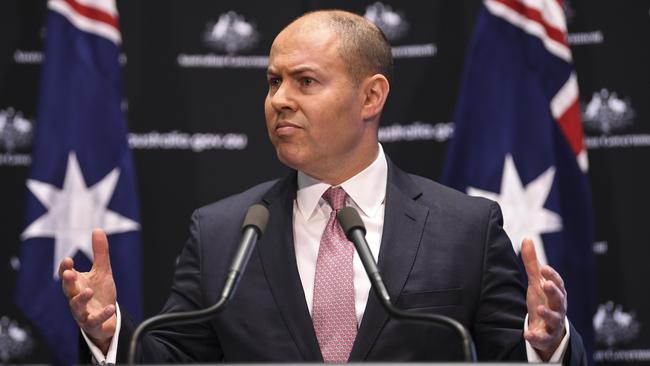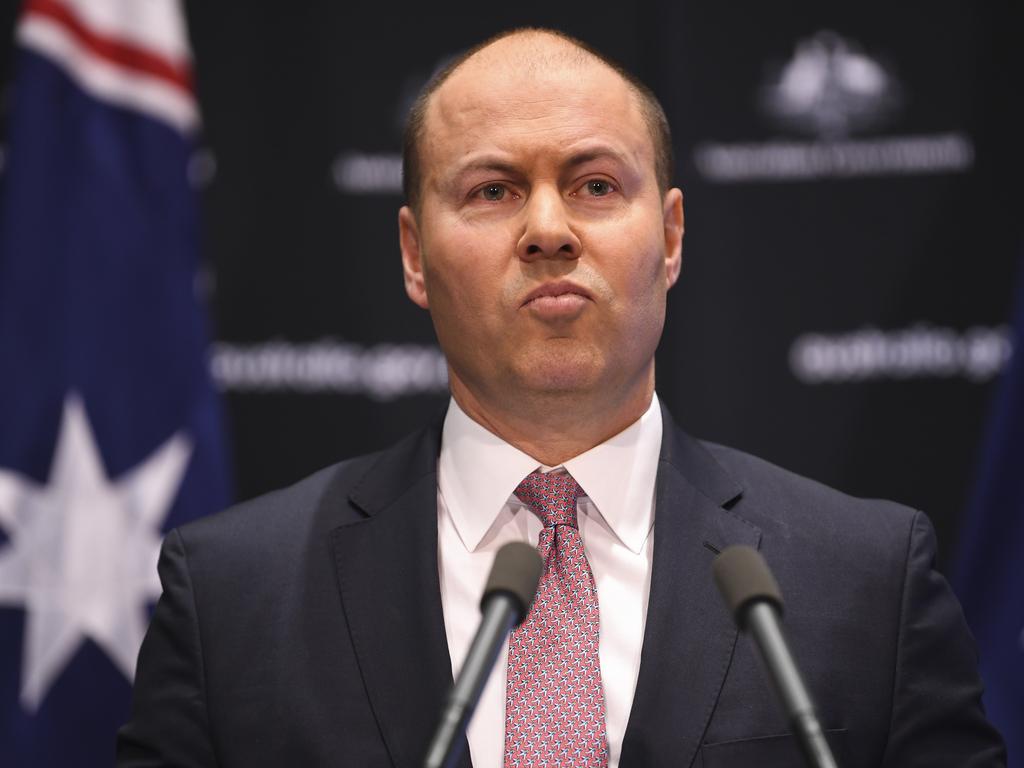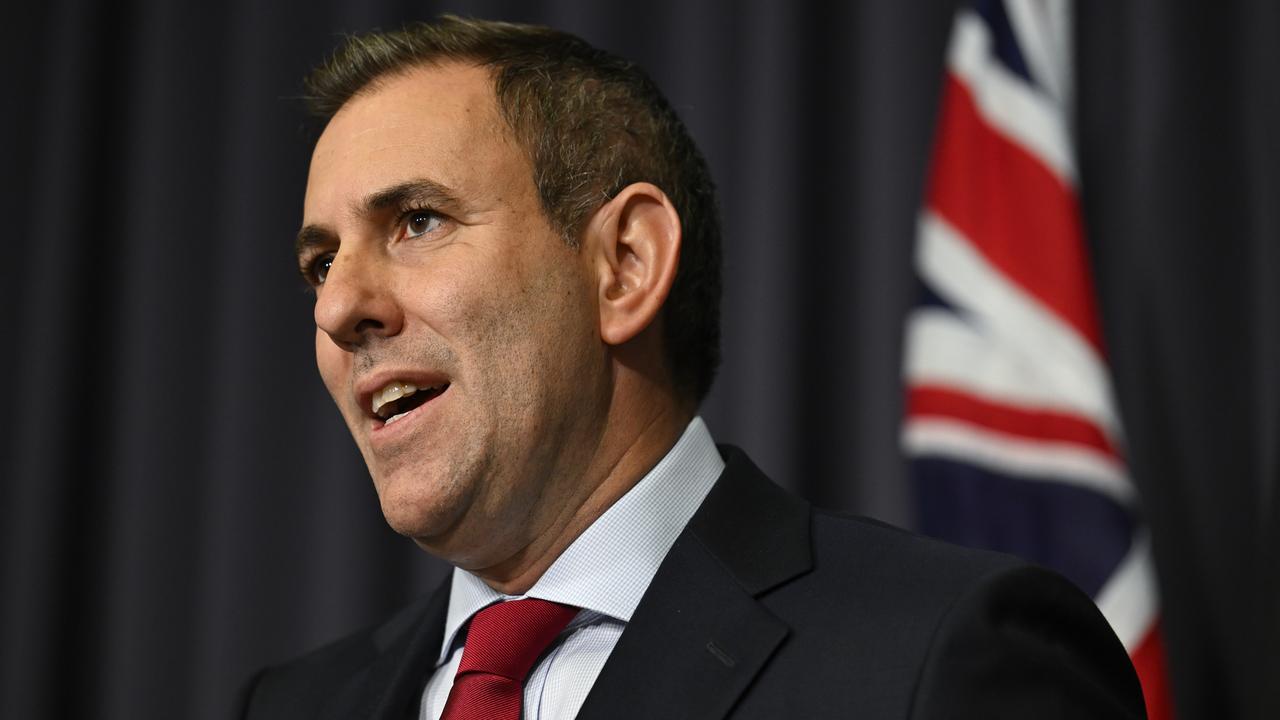Cost of beating coronavirus: recession as nation braces for worse
Treasurer warns of ‘far more severe’ economic hit in June as he confirms COVID-19 crisis has brought recession.

Australia has been plunged into its first recession in three decades by the once-in-a-century COVID-19 pandemic, ending the nation’s record 29-year run of growth, with Josh Frydenberg warning of a “far more severe” hit to the economy in the June quarter.
The Treasurer said the largest quarterly decline in consumption in 34 years had driven a 0.3 per cent contraction over the first three months of this year as a result of the staged introduction of social-distancing restrictions through March.
Annual GDP growth slowed from 2.2 per cent to 1.4 per cent, the slowest year-on-year growth since the global financial crisis, after the economy grew by 0.5 per cent over the December quarter, seasonally adjusted figures from the Australian Bureau of Statistics showed.
Asked whether the nation was in recession, Mr Frydenberg said: “The answer to that is yes.”
Despite the grim news, he emphasised the nation’s “remarkable resilience” in the face of the health crisis, saying that on average, OECD economies shrank by more than six times Australia’s.
Speaking after the release of the national accounts figures, Mr Frydenberg said “this story today is the result of very difficult health decisions that have had a very severe economic impact”.
“The impact in the June quarter will be even more severe, (but) we’ve climbed this mountain before, we’ll climb it again.”
A recession is defined as two consecutive quarters of negative growth..
He also pushed back the government’s mini-budget, slated for next week, until July 23, to coincide with Treasury’s review of the $70bn JobKeeper wage subsidy program. The delay will allow the government to assess the progress and impact of the three-stage easing of restrictions, due to be completed next month.
“What we want to do is understand where businesses are in the recovery stage,” the Treasurer said. “In the context of an economy where the restrictions are being eased and people are getting back into work, we need to assess continuation of that JobKeeper program. We want to understand whether the $1500 payment continues to be the right amount … bearing in mind that some people are getting paid more than they would otherwise get by virtue of having a flat payment.”
The government has already delayed the federal budget until October, blaming the heightened uncertainty associated with the pandemic.
The ABS figures showed the steepest drop in consumption in 34 years, down by 1.1 per cent over the quarter. The China travel ban from the start of February also weighed heavily, as sharp falls in inbound tourism and international students drove a massive 13 per cent fall in services exports.

GRAPHIC: GDP peaks and troughs
The narrow quarterly contraction comes ahead of what economists expect will be the sharpest quarterly contraction on record in the three months to June, as social-distancing measures to contain the spread of the virus sparked mass layoffs and shuttered businesses. Experts now predict that GDP will fall by 6-9 per cent in the June quarter, versus early Treasury and Reserve Bank expectations for a drop of 10 per cent, before an expected rebound in the second half of the year.
Sources said Treasury secretary Steven Kennedy told employer and union representatives in Sydney on Wednesday that the economy could take five to seven years to recover from the crisis.
The Morrison government has turned its attention towards how to nurse the economy out of intensive care, including where and when to scale back its unprecedented stimulus. It is planning on rolling out targeted measures supporting at-risk sectors across June, ahead of the Treasury review into JobKeeper being finalised.
Treasury officials are monitoring real-time data, including point-of-sale information from banks, retail spending, consumer confidence numbers and construction figures to track whether the recovery could be V-shaped, indicating a faster trajectory.
The Australian understands further stimulus measures, including an arts and entertainment package and changes to childcare payments, will be announced.
Significant tax reform, slashing red and green tape, and investment-friendly policies were expected to feature in the October 6 budget to help drive the economy in the back end of the year. “Tax reform is something that’s on the agenda,” the Treasurer said on Wednesday. “Whether it’s infrastructure, tax, industrial relations, skills, deregulation, that’s what’s going to drive … confidence.”
The government has also left open the door to consider changes to the JobKeeper scheme, contingent on the Treasury review, to continue support for at-risk industries. Programs such as JobKeeper and the expanded JobSeeker are due to expire at the end of September, and switching off these payments would be a significant hit to household income, AMP chief economist Shane Oliver said.
“Whether this is a major problem or not will depend on how quickly demand springs back and how quickly those who have lost their jobs can find another one,” Mr Oliver said. “The earlier-than-expected reopening of the economy provides confidence that these problems can be avoided or minimised.”
The national accounts painted a picture of collapsing private demand, bolstered by a large increase in public expenditure and supported by net exports. Government spending jumped 1.8 per cent over the quarter, contributing 0.3 percentage points to GDP. That was overwhelmed by the 1.1 per cent fall in household expenditure, the first quarterly contraction since December 2008, as private demand took 0.8 percentage points from national output.
The fall in household spending over the first three months of the year will pale in comparison with what Citi chief economist Josh Williamson predicts will be a 13 per cent collapse in the June quarter.
As Australians stayed home to avoid first bushfires and smoke and then the virus, spending on services including transport, hotels, cafes and restaurants, recreation and culture suffered a historic drop of 2.4 per cent.
This was offset by the panic buying of essentials and pharmaceuticals in March, which pushed household spending on goods up 1 per cent over the quarter.
As households reined in spending, they sharply increased savings. The household saving-to-income ratio jumped to 5.5 per cent from 3.5 per cent, with the ABS data showing that gross disposable income lifted 6.2 per cent, largely as a result of a big jump in social assistance benefits.
A 6.2 per cent fall in imports outweighed a 3.5 per cent fall in exports, leading to a 0.5-percentage-point contribution to overall growth from net trade.







To join the conversation, please log in. Don't have an account? Register
Join the conversation, you are commenting as Logout